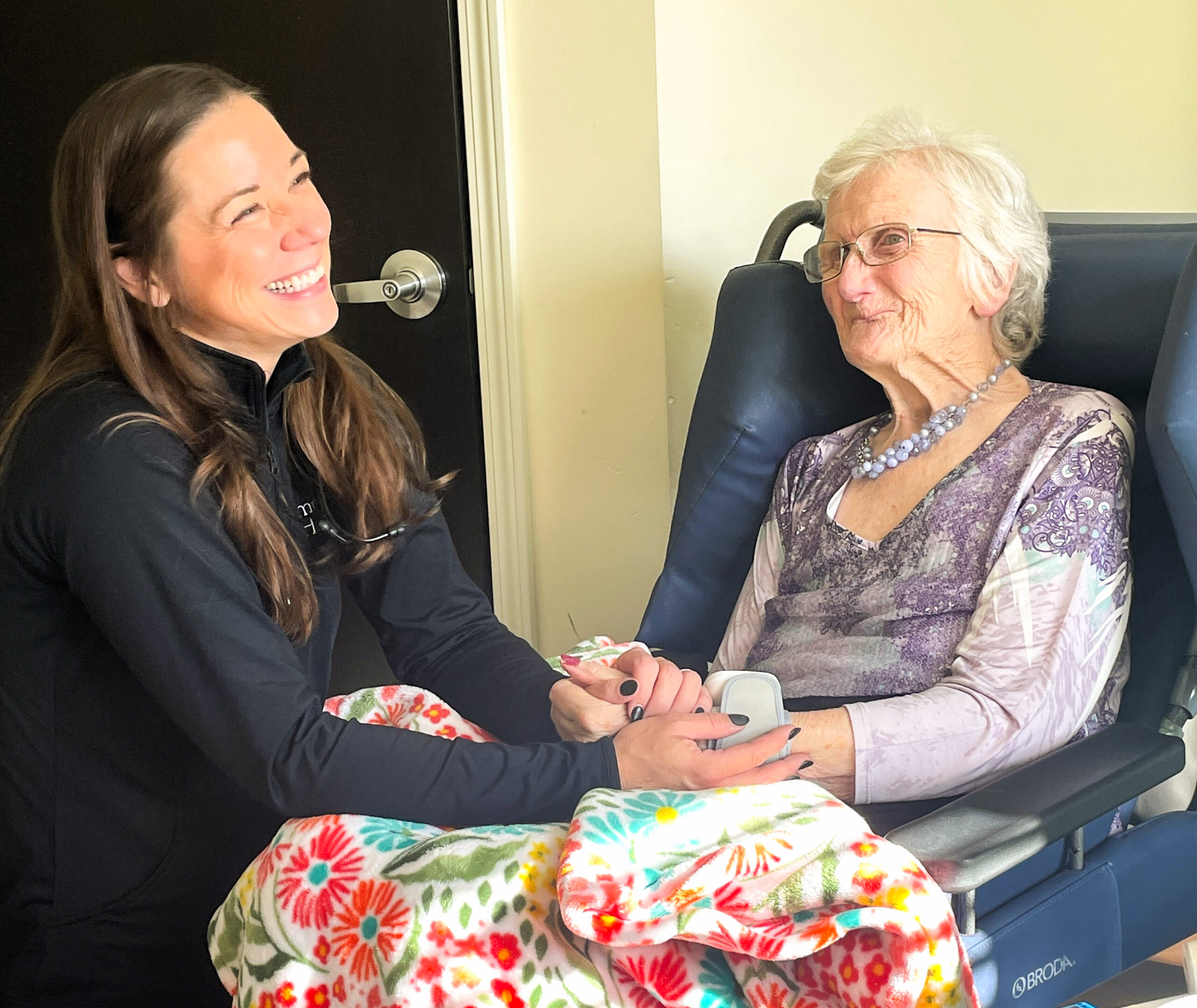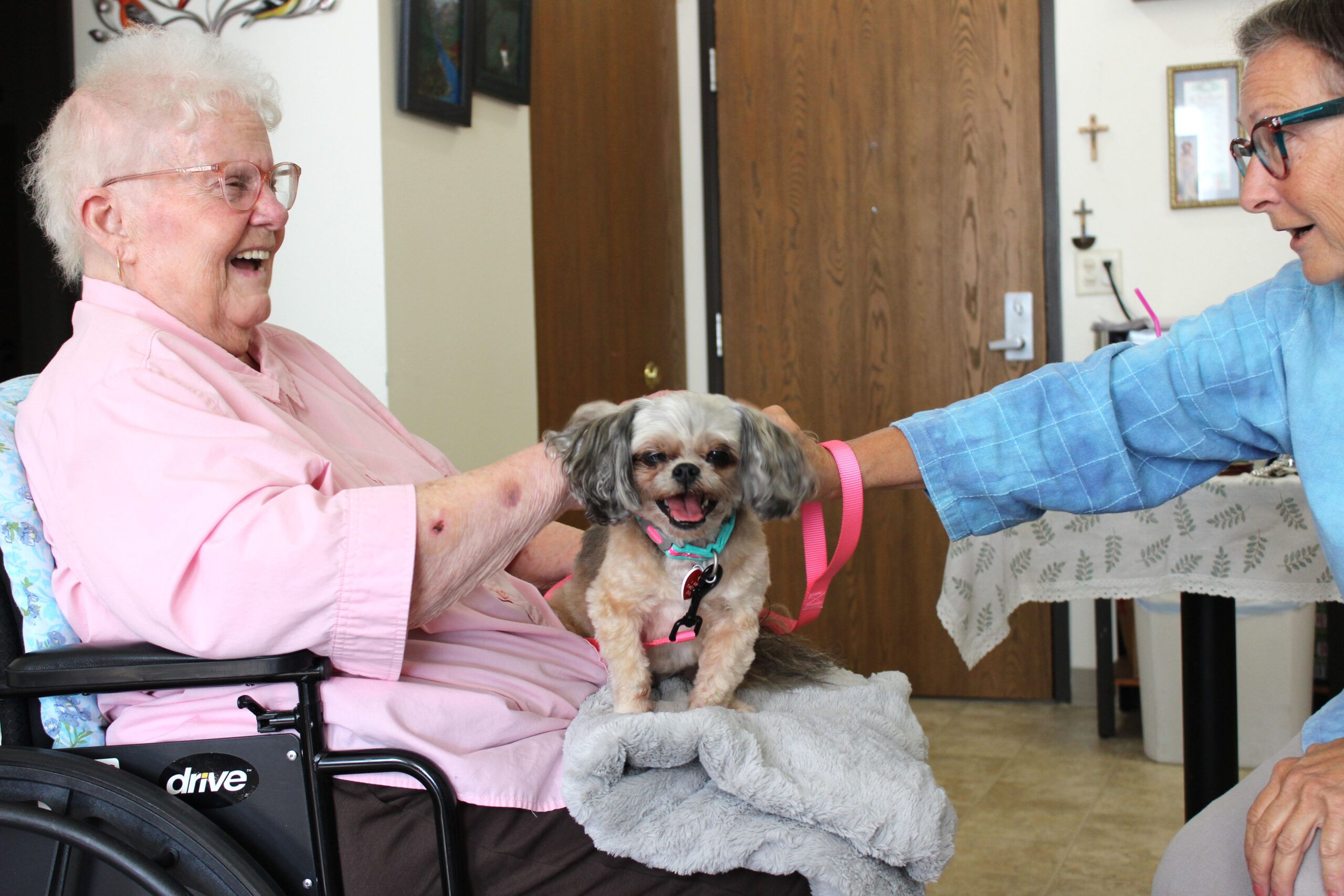Throughout her career, Brittany Rickert has explored nursing jobs in various settings but keeps getting drawn back to hospice. For her, there’s little out there that offers such a unique and rewarding experience.
“There are landmarks throughout our lives and death is one of them,” says Rickert, a nurse of 15 years. “It is very special to be allowed into that sacred space with patients and their loved ones, to support them through such a pivotal portion of their life.”
As a registered nurse case manager with Emmanuel Hospice, Rickert is in a diverse role that requires her to use both clinical and emotional support skills to walk alongside patients on their end-of-life journey.
She defines her position as the “coordinator of the patient experience altogether,” working alongside an interdisciplinary team to bring supportive services directly to patients, wherever they call home.
“My goal is to make sure each patient’s quality of life is at its best and that patients are getting everything they could possibly want from hospice care to live fully and comfortably,” Rickert says, noting she collaborates with social workers, spiritual caregivers, music therapists and more, depending on a patient’s goals and needs. “I want each patient to feel completely cared for and for the family to know they’re in good hands.”
As Rickert guides patients through their options, she empowers them to make informed decisions about their care. Patients select which services are important to them. Alongside traditional medical care options, Rickert likes to highlight the complementary therapies and services available, including massage therapy, pet visitors, essential oils and more.
“People are often surprised to learn about our additional therapies as not every hospice offers them,” Rickert says. “Patient wishes are another example that can be very meaningful and connect with our goal of making hospice more about living. Just this past month, I have been working on a wish to get a family out to an MSU basketball game for a huge Spartan fan in our care.”
Another key point Rickert emphasizes with families: The care team is available 24/7 to answer questions and dispatch care as needed.
“Just because I’m not scheduled to come back until next week for a regular visit does not mean I or another member of the care team can’t check in sooner,” she says. “I reassure families our light is always on. We’ve got you.”
Rickert enjoys being “out in the field” regularly and providing direct patient care herself. Because hospice is a service, not a place, she is caring for patients wherever they are all throughout much of West Michigan. That distinction is particularly relevant this time of year as Emmanuel Hospice celebrates National Care at Home Month and the role of hospice in the spectrum of in-home care.
During a typical patient visit, Rickert checks vitals and does a head-to-toe assessment, zeroing in on common symptoms that can occur as the end of life approaches. She manages medications and takes stock of supplies and other equipment to help patients remain comfortable in their home.
Providing emotional support is intertwined with the clinical side of her role. As a main point of contact for patients and their loved ones, it’s critical she helps them navigate unchartered waters with empathy and respect. Rickert aims to be a reassuring presence to everyone involved.
To learn more, call 616.719.0919 or visit EmmanuelHospice.org.




